Infrared Photography Part II: Processing
31 Jan 2016, Posted by in Blog, guide, landscapes, post processing, workflowLate last year, I wrote my first post on infrared photography that attempted to cover the practical aspects of using a Hoya R72 IR filter to capture IR images. This post is a follow up, and is more focussed on the processing side of things using Lightroom. I’m not sharing anything new or novel here really, it’s more an exercise to highlight resources that are already out there that helped me find my way.
IR photography lends itself to creating high contrast black and white imagery, and that is my primary reason for shooting in IR, however it can also be used to create ‘false colour’ images – you know, the ones where you still see the blue sky against a fairly stark near-monochrome landscape. I’m mainly going to cover processing to get a nice high contrast black and white image out the other side, but will touch on false-colour at the end.
So, if you’ve been out shooting with the Hoya R72. using the coolest white balance possible, e.g. 2500 K, you should have ended up with an image like this, below.
This was shot at 70mm, f/5.0, 13.0 seconds at ISO640. In my last post I touched upon the need for longer shutter speeds due to the reduced sensitivity of the sensor to IR. Here, I pumped the ISO and opened the aperture pretty wide in order to keep the shutter speed from being too long – after all, I was hoping for a crisp reflection in the lake. You can see the output is dominated by bright magenta tones. This is typical of an IR raw out of the Nikon D800. When I used to shoot with the D7100, the sensitivity was even further reduced (i.e. needed longer shutter speeds/higher ISO) and the output was typically much more reddish, so it’s probably fair to say that your output may vary depending on your camera/sensor.
It’s also worth saying that this is the kind of subject matter that I find suits IR perfectly – trees, clear sky, water, brickwork. The colour version of this image, without the IR filter on, was much less captivating – bland shadowy trees, distracting colours that weren’t adding anything. I don’t have a like-for-like comparison to the shot we’re walking through, but I have these two below to show the difference.
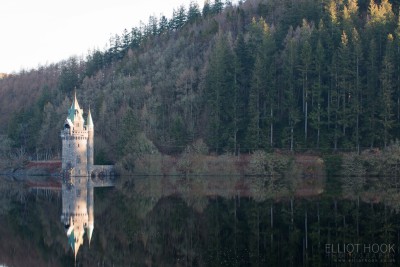
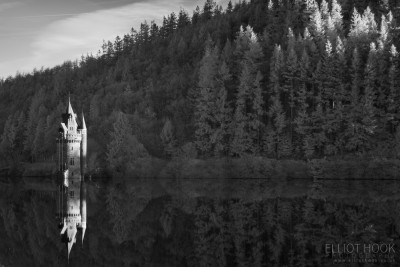
Anyway, back on with the processing. The first step in the processing workflow is to neutralise the magenta colour cast. You could process straight on to mono without correcting it, but if you do want to go the false colour route, you’ll be left with a cast that you can’t remove. To neutralise the colour cast, I follow this tutorial from David Clapp. You only need to go through it once, and then you’ll have a preset camera profile in Lightroom for any future IR image. Once the new preset is applied, the image will look something like the below, but now have a colour temperature of around 6900K in Lightroom, giving you plenty of flexibility to make it cooler still to neutralise the greens.
The intention is for the greens to be rendered as white, so the next step is to use the colour picker, and select any foliage in the image. This will then try to neutralise those tones, turning the foliage white. If you do this, the image should look like the below. You will see residual colour in the sky and in some of the foliage, and that colour is the basis of the false colour IR images that you see. We will come on to that in a bit.
At this point, the processing can go one of two ways, black and white or false colour…
Black and White
To perform the B&W conversion, you can use whatever technique you usually use. I flip between using the B&W conversion within Lightroom or using Silver Efex Pro depending on the individual image. The image below is a straight Lightroom conversion, with some levels adjustments, some tweaking to the ‘black and white mix’ to make use of the yellow tones in the sky to give more contrast, and a small crop. Generally, the hard work to give the high contrast B&W image is done in camera through use of the filter, so there is never really a need to push it too hard which ever way you prefer to do the conversion.
False Colour
False colour is a route I don’t frequently go down. When done well, I think the images can look fantastic, if a little surreal, however I can just never achieve a level of finish that I am comfortable with. To achieve the false colour look, again I follow another tutorial by David Clapp. It’s basically a case of doing a colour channel swap, where you swap the reds and blues. The result is that the yellowish sky, from above, will take on a blue hue, and the foliage will take on red hues, giving the result below:
This has been reigned in a little in terms of saturation as the straight output is far too unnatural (as if the whole thing isn’t unnatrual, I know). But I’m still not to keen on the result, I think it needs more work.
If you want to see what false colour IR should look like, take a look at David Clapp’s gallery, here – some incredible work on show, producing some stark, stylised landscape imagery.
I think it’s also worth drawing attention to Russ Barnes’ “Backwater” collection at this point. They are a series of colour infrared images that look to be being used almost straight out of the camera, following the white balance neutralisation above. No B&W conversion or colour channel swapping, and the result is fantastic, a limited colour palette that leaves the viewer concentrating on the texture and tonality, whilst still being richer than straight monochrome.
Anyway, I think that’s about it from me. I just wanted to share the process I use to generate infrared images, with a Hoya R72 filter, to help others who are just starting out exploring the technique. In this post, and the previous one, I’ve included links to the resources that helped me find my way and I hope they can help others on their IR journeys. If you have other resources that you find invaluable, or have questions about anything I’ve shared, please do get in touch.
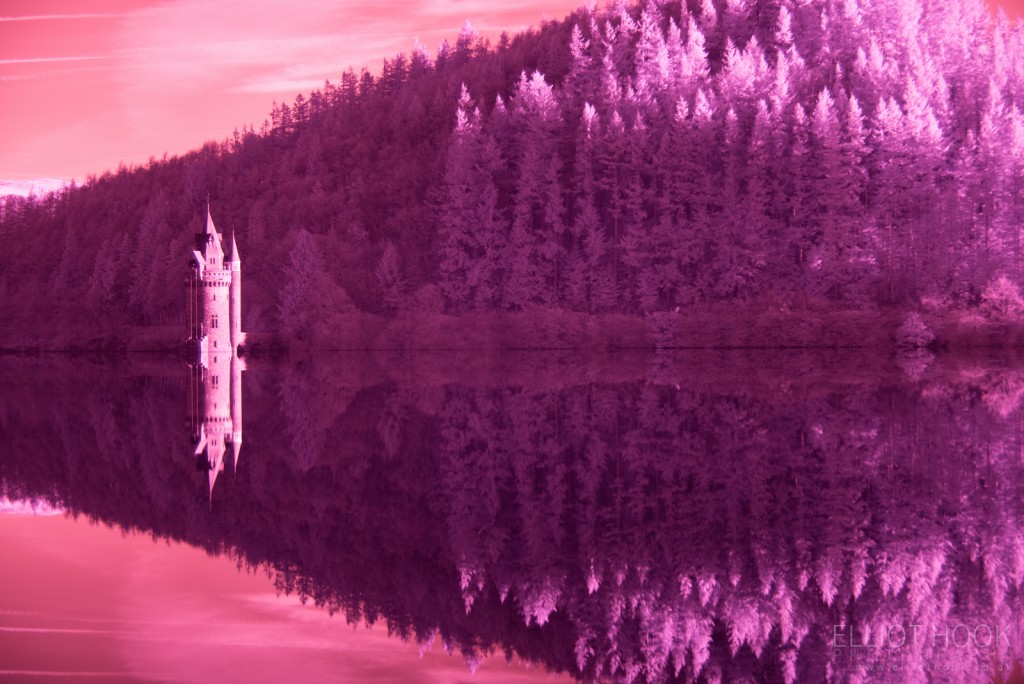
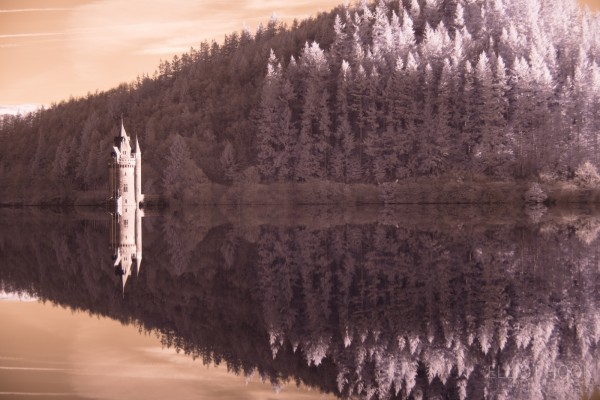
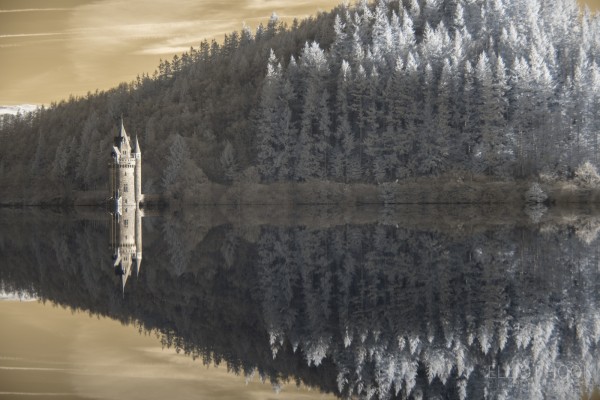
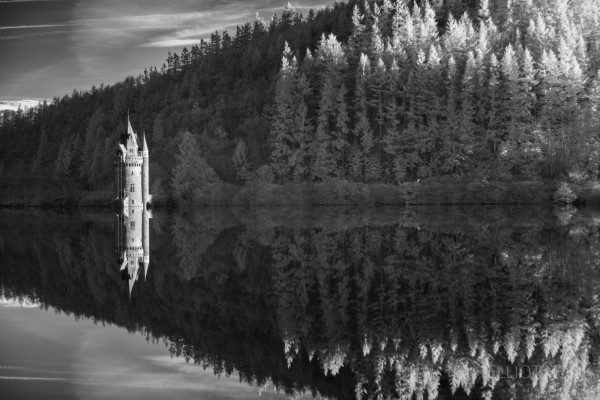
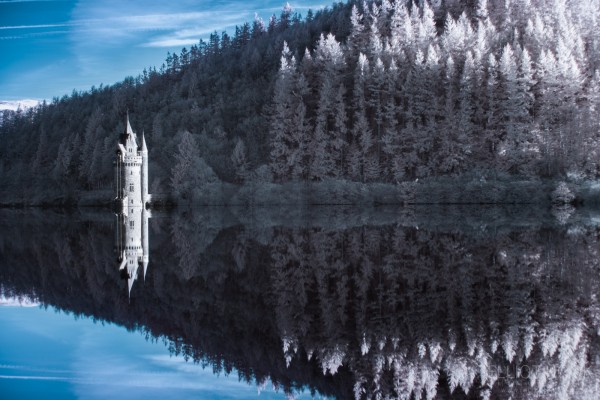
[…] to 2500 K. This gives you a raw file that is ready to be processed (I will come on to processing later on.) – typically reddish/purple in colour. The straight-out-of-the-camera version of the header […]